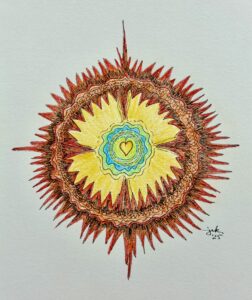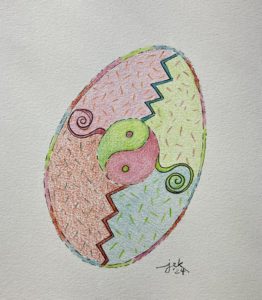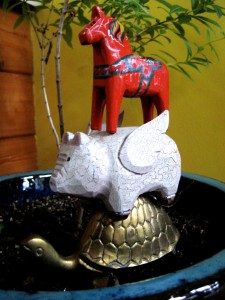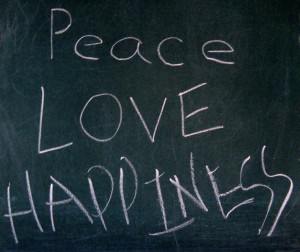
-Artwork © 2025 Jan Ketchel
The dominant feature of those who hold power in the world at this time is cruelty. The rhetoric and behavior of those warring entities is both disdain and indifference toward the suffering of adversaries and a polarized philosophy that can only see solution in the destruction and elimination of opposition. Understanding the energetics of cruelty can truly lead us to a path of peace.
As we enter the autumn of our seasonal cycle, we must acknowledge Nature’s Law of Destruction as the necessary precursor to new life. We are indeed in the cosmic season of Kali Yuga, the Dark Age of Degeneration. World leaders are under the spell of such energy, channelling it with gusto. If we suspend all judgment, we see the necessity of this breakdown and can turn our attention to the process of preparing for renewed life.
Beyond the destruction of autumn lies the barren season of winter, where life moves inward to the darkness of the soul in the shadowland of Self. Winter offers a peek into the Dark Night of the Soul, where we are invited to face and resolve our inner mysteries. It is here, if we are ready, that we discover the covert defenses we have utilized to avoid our deepest feelings and needs. One such defense is that of reaction formation.
Sigmund Freud introduced reaction formation as an ego defense that “transforms an unacceptable or anxiety-provoking impulse or feeling into its opposite” (from Brutus AI). For instance, instead of consciously acknowledging an unacceptable desire or emotion, we act outwardly with just the opposite of how we truly feel. Thus, we might act affectionately toward someone whom we actually feel hostility toward.
A more nuanced appreciation of the dynamic of reaction formation is the energetic exchange that occurs when something is transformed into its opposite. For example, the intensity of affection one might feel for a person, that is then followed by a felt sense of rejection by that person, might result in a corresponding emotionally intense feeling of hatred toward them.
This compensatory emotional reaction assuages and redirects the original energy of affection, while it also protects the ego from the feeling of rejection. Such is often the motive in stalking behavior, where one can be said to be in love with hatred.
Cruelty might issue from disappointments at the primal-need level of human development when one is most vulnerable, sensitive and needing of attention. The British psychoanalyst, Melanie Klein, went so far as to suggest that a frustrated infant would assign one of its mother’s breasts to be the ‘good breast’ and the other the ‘bad breast’ to energetically balance its joys and sorrows and preserve a lifesaving connection to its ‘flawed’ human mother.
Cruelty, however, permits no such defensive option. Cruelty bespeaks such a deep experience of felt rejection at one’s core, the shame of which is reactively transformed into the pleasure of rejecting others and bathing in their extreme suffering. The scapegoating of others creates a playing field where the ego is justified in its fixation of hatred, with an intensity that nullifies its deep sense of inner rejection and abandonment.
When we are able to acknowledge and feel the truth of our deepest disappointments, we are freed from defensive illusions and entitlements that fuel cruel thoughts and actions. These actions allow us to experience love for ourselves, at the deepest level, and love for all who have taken on the challenge of loving in human form.
Planet Earth is the planet for the accelerated experience of refining love. Taking the Night Sea Journey of Recapitulation allows us to gather, from all our disappointments, a loving acceptance of everything. Immortal souls we may be, but in the context of a mortal life love is challenged to grow amidst its greatest adversary, death itself.
To move beyond the defense of reactive formation to true loving acceptance of all that is, is the foundation upon which new life will grow in the New Age, beyond the Kali Yuga of now.
Those of us now present in human form are privileged to contribute to this energetic emergence, most especially through the practice and acceptance of all that is, within and without.
It’s all about love,
Chuck



